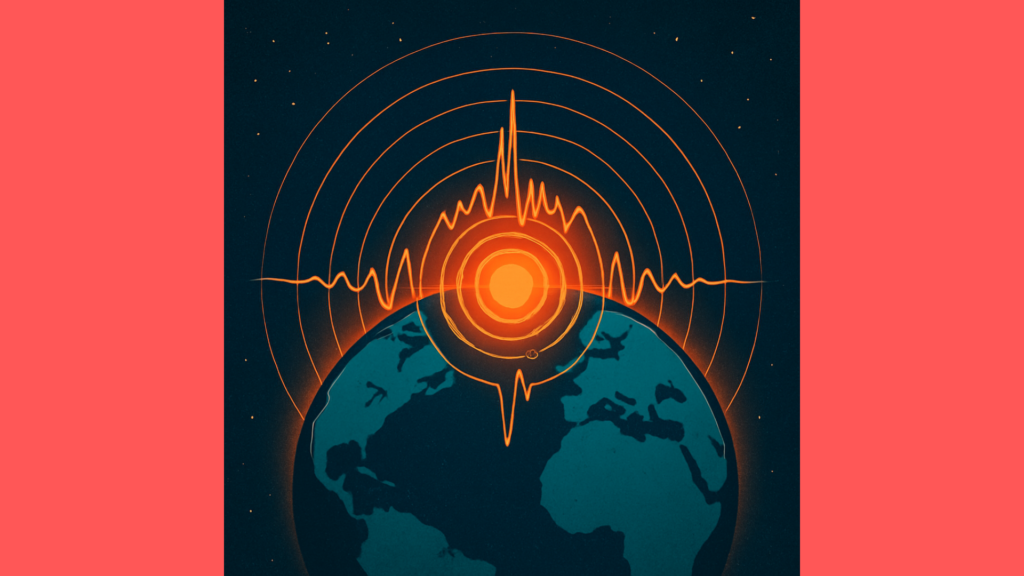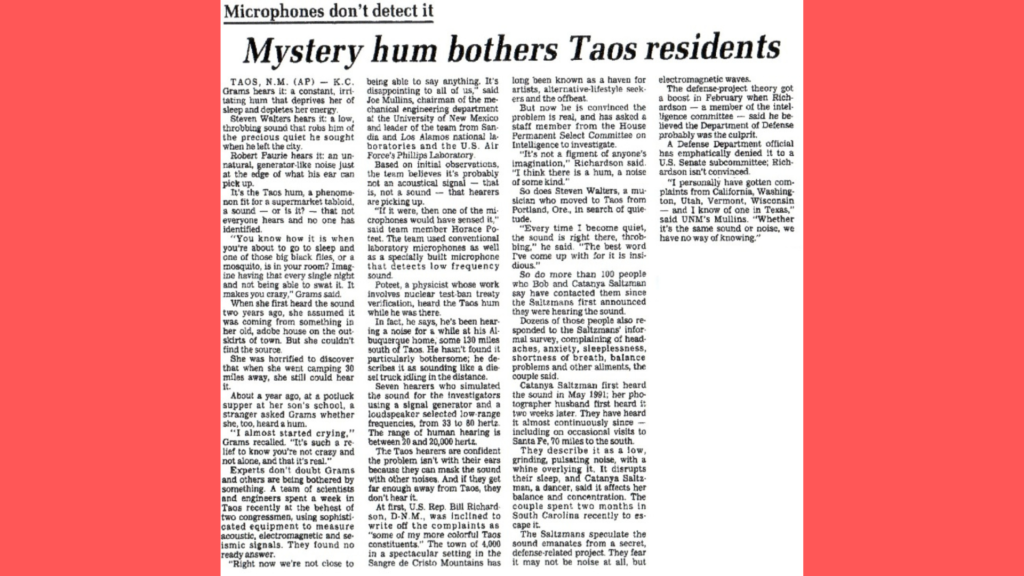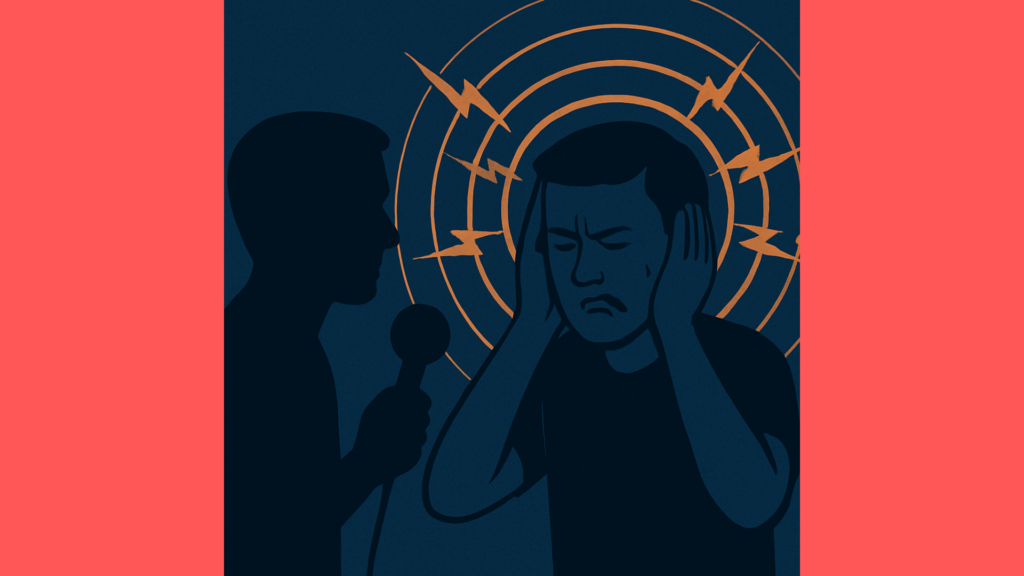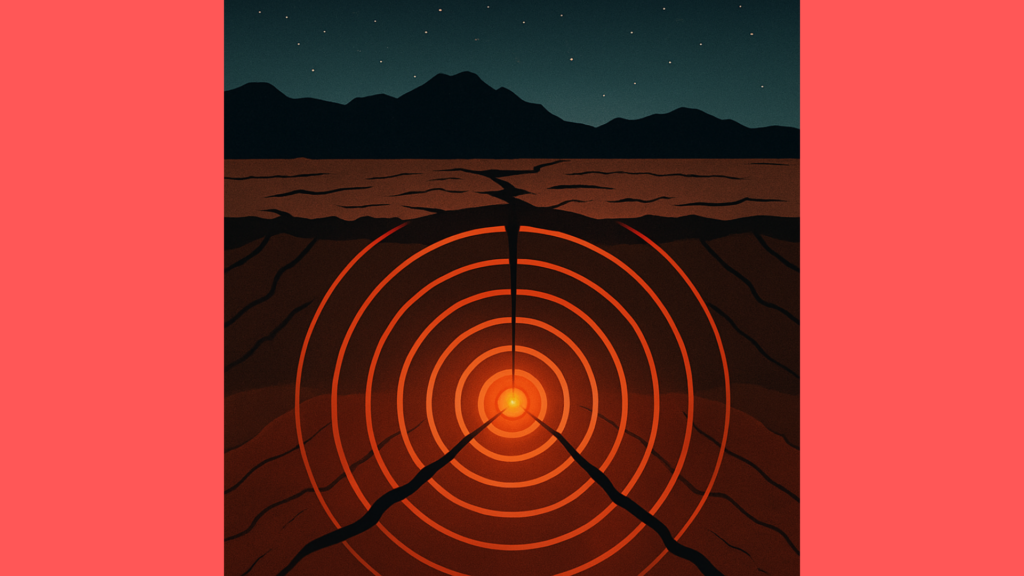
Introduction
Across the world, strange unexplained sounds haunt quiet towns and rural landscapes. From the “Sky Trumpets” reported in Canada to the mysterious “Bloop” echo in the Pacific Ocean, unexplained noises often stir both fear and fascination. But none has captivated attention quite like The Taos Hum, a persistent low-frequency droning sound heard by only a fraction of the population in Taos, New Mexico.
Unlike many paranormal mysteries, the Taos Hum was officially investigated by government labs, universities, and independent researchers. Yet after decades, it remains unsolved. For those who hear it, the sound is inescapable, maddening, and sometimes life-ruining. For those who don’t, it’s invisible—making it one of the strangest perceptual mysteries ever recorded.
But here’s where it gets even stranger: the Taos Hum is part of a larger global phenomenon, with roots stretching into ancient history, geology, neurology, and even conspiracy theories.
This blog takes you through everything you need to know about the Taos Hum, including details rarely mentioned elsewhere.
What Exactly Is the Taos Hum?
The Taos Hum is described as:
- A low-frequency rumble or drone (20–80 Hz)
- Similar to a distant diesel engine or idling truck
- Heard more often at night and indoors
- Often accompanied by vibrations felt in the body
The most bizarre aspect? Only around 2–10% of people in the region can hear it. Those who can are called “hearers.”
Hearers report:
- Insomnia (sound disrupts sleep)
- Headaches and nausea
- Emotional distress and anxiety
- Physical sensations (pressure in the ears, chest vibrations, even palpitations)
Some describe the experience as like being “trapped inside a giant beehive.”
The Origins: Why Taos?
The Hum became famous in the early 1990s when dozens of Taos residents complained to local authorities about an inescapable low droning sound.
- In 1993, after growing media attention, residents petitioned Congress.
- The University of New Mexico, Los Alamos National Laboratory, and Sandia National Laboratories were assigned to investigate.
- Despite advanced acoustic and geophysical testing, no clear origin was ever identified.
Why Taos? The town sits in a geologically unique basin, surrounded by mountains, volcanic fields, and fault lines—making it a hotspot for natural acoustic and electromagnetic anomalies.
Scientific Investigations: What We Know
The 1993 Taos study is often reported as “inconclusive,” but deeper examination reveals important findings:
- Low Frequencies Were Detected
Researchers picked up unusual signals in the 30–80 Hz range in certain Taos neighborhoods. - Not Everyone Was Affected
Only a small portion of the population could hear it—even in the same household. - Magnetic Anomalies
Some magnetic irregularities were recorded but were never publicly explained. - No Obvious Industrial Source
Unlike the Windsor or Kokomo hums, no factories, compressors, or fans could be traced.
👉 The most mysterious part: Some data gathered by Sandia National Laboratories was never released, sparking speculation about classified findings.
Rare Theories About the Taos Hum
Most sources repeat the usual “it’s tinnitus” or “it’s industrial.” But here are rarely discussed theories:
1. Brain Resonance Theory
Some neuroscientists propose the hum may not be external at all. Instead, brains of hearers may resonate with natural infrasound, effectively “translating” subsonic vibrations into an audible hum.
2. Piezoelectric Rock Vibrations
Northern New Mexico is rich in quartz-bearing volcanic rock. When stressed by tectonic activity, quartz can emit electrical and acoustic signals—possibly producing localized low-frequency vibrations.
3. Microwave Auditory Effect (Frey Effect)
Declassified U.S. military research shows microwaves can stimulate auditory perception directly in the brain. Could experimental radar or ELF (extremely low-frequency) communications be affecting Taos residents?
4. Schumann Resonance Amplification
The Earth has a natural electromagnetic resonance (7.83 Hz). Some scientists speculate that Taos’s geology amplifies these planetary frequencies, making them audible to sensitive individuals.
5. Interdimensional Hypothesis
In paranormal circles, the hum is seen as a “cross-dimensional bleed,” where sounds from a parallel reality overlap with ours.
The Human Experience: Beyond Science
Hearers’ testimonies reveal just how strange the hum can be:
- Disappearing Act: Some say the hum vanishes during thunderstorms or after local earthquakes.
- Family Sensitivity: In multi-generational families, only certain members hear it.
- Indoor Amplification: Unusually, the hum is louder indoors than outdoors.
- Sleep Paralysis: A number of hearers link the hum to sleep paralysis episodes.
One Taos retiree described it as:
“Like a giant engine idling inside my head. Sometimes I feel it in my chest, like my own heartbeat has turned into a machine.”
Global Parallels: The Hum Around the World
The Taos Hum is not unique. Other hums share similarities:
- Bristol Hum (UK, 1970s): Affected thousands; some victims reported nervous breakdowns.
- Windsor Hum (Canada, 2010s): Traced to industrial activity—but persisted after shutdown.
- Kokomo Hum (Indiana, 1990s): Identified as factory compressors, but not everyone was satisfied with the explanation.
- Auckland Hum (New Zealand, 2006–present): Ongoing and unexplained, with residents calling it “an invisible stalker.”
The common threads:
- Low frequencies (~30–80 Hz)
- Only a small portion of the population can hear it
- Causes stress, sleep loss, and psychological distress
Unusual Side Notes and Little-Known Facts
Here are some fascinating, rarely mentioned nuggets:
- The Hum Travels With People (Temporarily): Some Taos residents reported hearing it when visiting other states—before it mysteriously faded away.
- Animals React: Farmers say dogs howl, cattle grow restless, and horses pace during strong hum episodes.
- Body as Antenna: Hearers describe feeling vibrations in the chest cavity or stomach, not just ears.
- Hum vs. Tinnitus: Unlike tinnitus, the Taos Hum is location-specific—people stop hearing it when they leave the area.
- Solar Connection: In other global cases, hum intensity increased during solar storms, suggesting a geomagnetic component.
Cultural & Mystical Interpretations
The hum has also been woven into cultural imagination:
- Native American Traditions: Pueblo peoples described the Earth’s “heartbeat” or “song,” eerily similar to hum reports.
- Ancient Chinese Records: Han Dynasty texts mention a constant underground droning called “Earth Drums.”
- Esoteric Symbolism: Some link it to the “Music of the Spheres,” the belief that cosmic harmonics underpin the universe.
- UFO Lore: Given New Mexico’s UFO history, some suspect extraterrestrial technology or hidden bases.
Why The Taos Hum Remains Unsolved
The persistence of mystery comes down to:
- Instrumental Blind Spots: Infrasound and subtle electromagnetic signals are hard to measure.
- Subjective Nature: Only a fraction of people can hear it, limiting data reliability.
- Possible Multiple Causes: The Taos Hum may not have a single origin—it could be a layering of geological, technological, and neurological effects.
Conclusion
The Taos Hum is more than just an odd noise—it’s a multi-layered mystery of science, perception, and culture.
- To scientists, it’s an unexplained acoustic/geophysical puzzle.
- To hearers, it’s a torment that ruins sleep and peace of mind.
- To mystics, it’s the Earth or cosmos speaking.
- To conspiracy theorists, it’s hidden military experiments or alien communication.
Whatever the truth, one fact is undeniable: the Taos Hum forces us to confront the limits of human perception and the mysteries still humming beneath our world.
50 Frequently Asked Questions (FAQs) About The Taos Hum
General Questions
- What is the Taos Hum?
It’s a mysterious low-frequency humming sound reported in Taos, New Mexico, since the 1990s. - When was the Taos Hum first reported?
It gained attention in the early 1990s, leading to an official investigation in 1993. - Where is Taos located?
Taos is a small town in northern New Mexico, USA, surrounded by mountains and desert landscapes. - How many people hear the Taos Hum?
Surveys suggest between 2% to 11% of the population in Taos can hear it. - What does the Taos Hum sound like?
It resembles a distant diesel engine or a low, continuous rumbling.
Scientific & Technical Questions
- What frequency is the Taos Hum?
It typically ranges between 30–80 Hz, near the lower threshold of human hearing. - Did scientists investigate the Taos Hum?
Yes, in 1993 a team from Los Alamos and Sandia National Laboratories studied it. - What did the investigation conclude?
They confirmed some low-frequency signals but found no definitive source. - Is the Taos Hum related to earthquakes?
Some geologists suggested a seismic link, but no conclusive evidence exists. - Can machines detect the Taos Hum?
Sensitive microphones recorded weak low-frequency signals, but not enough to explain reports.
Health and Human Impact
- Does the Taos Hum cause health problems?
Some hearers report headaches, insomnia, ear pressure, and anxiety. - Can everyone hear the Taos Hum?
No, only a minority of people perceive it. - Why can some people hear it while others cannot?
It may be due to individual sensitivity, hearing range, or brain perception. - Is the Taos Hum dangerous?
There is no evidence of direct physical danger, but it can affect mental health. - Can the Taos Hum cause hearing loss?
No direct link to hearing loss has been found.
Theories & Explanations
- Is the Taos Hum caused by tinnitus?
Some doctors suggest this, but collective hearing by multiple people makes it unlikely. - Is the Taos Hum linked to military experiments?
Conspiracy theories claim so, but no official evidence supports this. - Could the Taos Hum be caused by satellites?
Some researchers suspect low-frequency radio signals may play a role. - Is the Taos Hum man-made or natural?
The source remains unknown—it could be either. - Has the source ever been identified?
No clear source has ever been found.
Comparisons & Global Cases
- Are there other hums like the Taos Hum?
Yes, similar hums have been reported worldwide. - What is the Windsor Hum?
A mysterious low-frequency noise reported in Windsor, Ontario, Canada. - What is the Bristol Hum?
One of the earliest reported hums, first noticed in Bristol, UK, in the 1970s. - Are all hums connected?
Possibly, but there is no proof they share a single cause. - Which hums have been solved?
Some, like the Kokomo Hum in Indiana, were traced to industrial fans.
Cultural & Social Impact
- Has the Taos Hum affected tourism?
Yes, curiosity has attracted tourists and paranormal researchers. - Has the Taos Hum been in documentaries?
Yes, several TV specials and news reports have covered it. - Do locals still complain about the hum?
Yes, though reports have decreased over time. - Has anyone moved away because of the Taos Hum?
Some residents claim they relocated to escape it. - Is the Taos Hum part of folklore now?
Yes, it has become a local legend and global mystery.
Unusual Questions
- Can animals hear the Taos Hum?
Some locals claim pets react to it, but no studies confirm this. - Is the Taos Hum louder at night?
Many hearers say it is more noticeable in quiet nighttime environments. - Does the Taos Hum stop suddenly?
Yes, it can disappear for days and then return. - Can earplugs block the Taos Hum?
No, most hearers say earplugs don’t help. - Is the Taos Hum stronger indoors or outdoors?
Many report it is louder indoors.
Conspiracies & Speculation
- Is the Taos Hum caused by HAARP (weather control project)?
Conspiracy theorists claim so, but there is no evidence. - Could it be linked to underground tunnels?
Some believe secret tunnels or bases may produce it. - Is the Taos Hum a government cover-up?
There is no official proof, but suspicions remain. - Could aliens be responsible?
Some UFO enthusiasts suggest it, but no credible evidence exists. - Is the Taos Hum a mind-control experiment?
A conspiracy theory suggests low-frequency sound is used for control, but no proof exists.
Modern Relevance
- Do people still hear the Taos Hum today?
Yes, though reports are less frequent than in the 1990s. - Has technology improved our ability to study it?
Yes, but the mystery remains unsolved. - Could smart devices detect the hum?
Some apps can record low frequencies, but results are inconclusive. - Has AI been used to analyze the Taos Hum?
Recently, researchers have begun using AI sound analysis, but no breakthroughs yet. - Is the Taos Hum unique to New Mexico?
No, but Taos is where it became famous.
Future of the Mystery
- Will the Taos Hum ever be solved?
Possibly, with advancements in sound science and physics. - Are there ongoing studies?
Yes, but funding and interest are limited. - Could climate change affect the Taos Hum?
Some speculate environmental changes may alter sound transmission. - What do locals think today?
Some dismiss it, while others still believe it is real and disturbing. - Why does the Taos Hum matter?
It challenges science to explain the unexplained and reflects the mysteries still hidden in our everyday world.




























